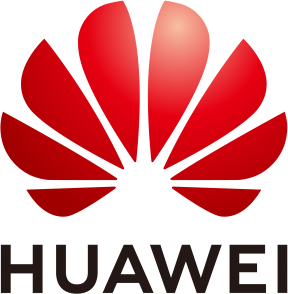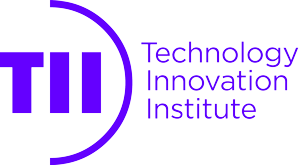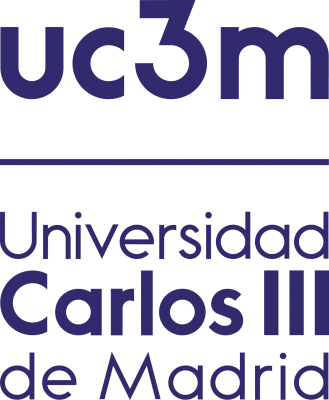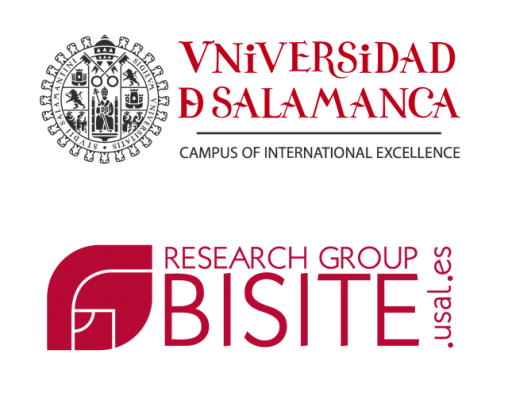Most of the Industry Program will be happening on-site and live streamed to remote attendees, while a small part will be only virtual. All presentations and panels will be available to be watched on-demand on the virtual platform from the conference dates.
Download here the Industry Program details (Updated 6 Dec)
List of presentations:
IP 1: Enabling 6G Hardware (by IMEC)
IP 2: Artificial Intelligent Regulator (by ASSIA)
IP 3: Examination of traditional regulatory limits in the face of technology advancements in 5G/6G using large, active antenna arrays (by Intel)
IP 4: Evolving Virtualized Radio Access network for 5G and beyond – opportunities and challenges (by Intel)
IP 5: A Primer on Wi-Fi 7: Objectives, Standardization, and Research (by Nokia)
IP 6: 5G Private/Enterprise Network for industrial verticals addressing TSN & URLLC workloads (by Intel)
IP 7: Second wave of disaggregated RAN (by IS-Wireless)
IP 8: Failures of TCP/IP: We need security, privacy, control and accountability! (by Smart Talk Beacon Solutions Ltd.)
IP 9: Model, Simulate and Test 5G Systems with MATLAB (by MathWorks)
IP 10: The path towards 6G: From millimeter waves to THz (by Rohde & Schwarz)
IP 11: Accelerate O-RAN Adoption in Next-Gen Mobile Networks (by Keysight)
IP 12: 5G Mobile Private Networks (by Vodafone)
IP 13: Open RAN and the digital transformation (by Vodafone)
IP 14: Spain’s 5G deployment, lessons learned
IP 15: Troubleshooting the gNB and UE with WaveJudge Wireless Analyzer (by Keysight)
IP 16: PRIME Hybrid: offering the best of both worlds (by Javier Hernández Fernández)
IP 1: Enabling 6G Hardware (by IMEC)
Presenter:
Michael Peeters, IMEC
Abstract: As we move into the era of 6G pre-competitive research, we need to make sure that we tackle the big challenges first. Much of 6G will be defined by de evolution of 5G (as has happened in the past), but there will be aspects that require more if we want to create a network that will truly serve new usecases driven by new users. In this talk, we want to focus on those aspects where we expect that we will need more than piggybacking on the steady improvement of Moore’s law for digital performance.
We see 4 major domains that we wish to tackle, from the perspective of IMEC and its ecosystem as a neutral ground through our open innovation approach:
- Sub-THz radio technologies driving compound semiconductor devices and circuits (e.g. InP) at cost
- Dynamic spectrum, spatial and infrastructure sharing
- Distributed massive MIMO and its deployment complexity
- Integrated/joint communication and sensing
Biography:
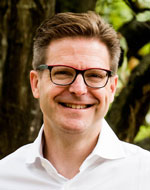 Michael Peeters
Michael Peeters
IMEC
Michael Peeters is VP of R&D for Connectivity at imec. His previous experience as CTO for both the Wireline and Wireless business lines at (what is now) Nokia was built on the culture, enthusiasm, and love for technology and science that he got from his time at Bell Labs—and the principles of Free Inquiry bestowed on him by his Alma Mater, the Vrije Universiteit Brussel (VUB). Next to this, he has served as the President of the CBRS Alliance, on the Board of 5G Americas, and on the Board of ATIS. Passionate about inspiring the next generation of engineers with the challenges of communications, he currently also lectures in Advanced Wireless and 5G Networks at the University of Antwerp.
During his research career starting with a Ph.D. in Applied Physics and Photonics from the Vrije Universiteit Brussel (VUB), he has authored more than 100 peer-reviewed publications, many white papers and holds patents in the access and photonics domains. An electrotechnical engineer by training, he is a senior member of IEEE and a Fellow of the VUB.
IP 2: Artificial Intelligent Regulator (by ASSIA)
Presenter:
John M. Cioffi, ASSIA
Abstract: Spectrum regulation challenges grow for both unlicensed (e.g., Wi-Fi) and licensed (e.g., cellular) opportunities, particularly those created by 10's to 100's of billions of connected, communicating devices. Dynamic, cognitive solutions just begin to find field use and initiate the inevitable march towards increasingly artificially intelligent allocation of spectra and space. This talk reviews some multiuser fundamentals, their complexity of solution, and how they may find future application to magnify spectral efficiency by orders of magnitude.
Biography:
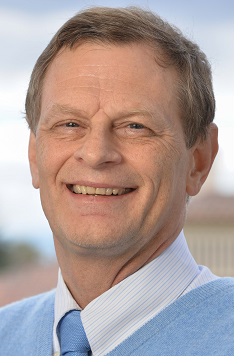 John M. Cioffi
John M. Cioffi
ASSIA
John M. Cioffi – Illinois-BSEE: 1978, Stanford-PhDEE: 1984; Prof. EE, Stanford, 1986-present, now recalled emeritus. Founder Amati 1991 (1997 purchased by TI); Chairman and CEO ASSIA Inc. Cioffi's specific interests are in the area of high-performance digital transmission. Awards include IEEE AG Bell (2010), Kirchmayer (2014) and Millennium Medals; Member Internet (2014) and Consumer-Electronics (2018) Halls of Fame; Marconi Fellow (2006); Member, US National (2001) and UK Royal (2009) Engineering Academies. Has served over a dozen boards of director PhyTunes (Chairman), Marconi Society (Vice-Chairman), Tinoq, and AltoBeam. 800+ papers and 150+ heavily licensed patents.
IP 3: Examination of traditional regulatory limits in the face of technology advancements in 5G/6G using large, active antenna arrays (by Intel)
Presenter:
Reza Arefi, Intel
Abstract: As they implement new technologies, regulators around the world work within the limits and procedures referenced in the ITU Radio Regulations (RR), a set of international regulations by all ITU-R member states that govern the use of spectrum by existing and emerging wireless technologies. However, the RR do not encompass every new technological concepts. And, as a result, adapting new technologies and concepts to work within the limits and procedures of outlined in the RR is not always straightforward. The use of active antennas, in which transmitters are integrated with the radiating structure, is one such topic.
Over the past couple of years, the ITU-R has been discussing how to apply conducted power limits to 5G transmitters using active antennas. The variance in the interpretations being debated is such that there could be quite a significant adverse impact on the deployment, operation, and performance of 5G stations. This challenge would only grow due to the trend in 5G/6G towards larger active arrays with potentially hundreds of transmitters. It is crucial to consider what these regulatory limits are, both in letter and spirit, how they have been used in the past, what impact the new interpretations could have, and in what ways they can accommodate multi-antenna and other new technologies.
Biography:
Reza Arefi
Intel
Reza Arefi leads Emerging Spectrum Strategies and Planning at Intel. In his role, he develops market-driven spectrum and regulatory strategies that support Intel’s existing and future wireless products. Reza has been actively contributing to standards, industry and international spectrum regulations since 1998, often in leadership roles. These included chairing various activities in IEEE LMSC (802), chairing Regulatory Working Group of WiGig Alliance, ITU-R SG1 (spectrum management), SG3 (propagation), and SG5 (terrestrial services).
Reza’s ITU-R leadership roles have led to development of several ITU-R Reports and Recommendations, latest of which is the now widely-used Recommendation ITU-R M.2101 on modeling of 4G/5G systems for use in spectrum sharing studies. He currently chairs the Joint Working Group 3K-3M on Clutter Loss in ITU-R SG3.
Reza has been with Intel since 2005. Prior to Intel, he worked for several technology companies including Siemens AG, LCC, and Arraycomm in various roles involving research, design, and deployment of various wireless and wireline communication technologies including smart antennas and 2G/3G network design and optimization.
Reza has also been actively involved in many industry forums over the years. Currently, he is an Executive Board member and Vice President of Global mobile Suppliers Association (GSA) and a member of GSA’s Spectrum Group Management Team.
With more than 25 years of experience in his field, Reza has made significant contributions to the development of 5G standards and technologies. He is regularly invited to speak at various conferences and industry events, including invited papers and keynotes, the latest of which was a keynote at an NSF SII center workshop (BEST-NEST) on the topic of spectrum sharing. He has also served as a Review Panelist on NSF’s SII grant proposal evaluation.
IP 4: Evolving Virtualized Radio Access network for 5G and beyond – opportunities and challenges (by Intel)
Presenter:
Udayan Mukherjee, Intel
Caroline Chan, Intel
Abstract: This session will discuss the evolution of radio access network to open and virtualized cloud native RAN. It will focus on the RAN networks today for 5G, current ecosystem landscape, emerging trends in this space for 5G and beyond. It will also talk about the opportunities and challenges as well as how our network will become scalable specifically in the context of virtualization. The session with discussion some of evolving trends towards 6G and how cloud native technologies and ubiquitous computing will play a crucial role going forward. Why is this topic important: Analysts are getting more bullish on ORAN/vRAN – Dell ORO recently increased the ORAN/vRAN adoption from 10 to 14% by 2025. There are lot of innovations and investments being done in both hardware and software associated with ORAN/VRAN. Multiple partnerships/consortiums are being formed across the RAN ecosystem. The usage will also extend from Macro network to enterprise & IOT networks as well. What industry challenges are you addressing / solving? This will address dynamic scalability of a network and availability of multiple ecosystem options that will deliver TCO benefits for the end customer.
Biography:
Udayan Mukherjee
Intel
Udayan is the Intel Fellow and Chief technologist of Wireless Network for Intel’s Networking and Edge Group. He leads technology and product development related to wireless radio access and core networks, including Cloud-RAN, virtual RAN, base stations based on the 5G and mobile edge platforms, as well as gateways and packet core solutions. Udayan has been very involved with IEEE, ORAN alliance and TIP/Facebook, has been previous keynote speaker at IEEE Globecom (2018 @ Abu Dhabi), was distinguished speaker in 2019 (@ Hawaii) and delivered keynotes/discussed related topics in multiple other IEEE, FCC and global forums. Mukherjee’s research interests include mobile computing and communication platforms; heterogeneous networks; next-generation air interface technologies; network virtualization and mobile edge services and applications including private network for industrial.
Caroline Chan
Intel
Caroline Chan is Intel’s Vice President and leads network incubation group addressing enterprise/Private Network. Caroline has also been a regular industry participant and been on Light Reading’s “the 5G 50 to watch” list as well as in the board of FB’s TIP project.
IP 5: A Primer on Wi-Fi 7: Objectives, Standardization, and Research (by Nokia)
Presenter:
Lorenzo Galati-Giordano, Nokia
Giovanni Geraci, Universitat Pompeu Fabra
Boris Bellalta, Universitat Pompeu Fabra
Abstract: As hordes of data-hungry devices challenge its current capabilities, Wi-Fi strikes again with 802.11be, alias Wi-Fi 7. This brand-new amendment promises a (r)evolution of unlicensed wireless connectivity as we know it, unlocking access to gigabit, reliable and low-latency communications, and reinventing manufacturing and social interaction through digital augmentation. More than that, time-sensitive networking protocols are being put forth with the overarching goal of making wireless the new wired. With its standardization process being consolidated, we will provide an updated digest of 802.11be essential features, place the spotlight on some of the must-haves for critical and delay-sensitive applications, and illustrate their benefits through standard-compliant simulations.
Biography:
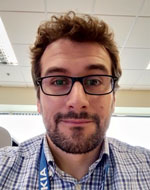 Lorenzo Galati-Giordano
Lorenzo Galati-Giordano
Nokia
Lorenzo Galati-Giordano (SM’20) is Senior Research Scientist at Nokia Bell Labs since 2015. His current focus is on future indoor networks and next generation Wi-Fi technologies, an area where he is contributing to the ongoing IEEE 802.11be standardization with pioneering works on large antenna arrays solutions for the unlicensed spectrum and receiving international attention from the press. He received the M.Sc. and the Ph.D. degrees in wireless communication from Politecnico di Milano, Italy, in 2005 and 2010, respectively, and the master's degree in Innovation Management from IlSole24Ore Business School, Italy, in 2014. He was also an R&D Engineer for Azcom Technology, an Italian SME, from 2010 to 2014. Lorenzo has more than 10 years of academical and industrial research experience on wireless communication systems and protocols, co-authored 20+ commercial patents, 30+ publications in prestigious books, IEEE journals and conferences, and 10+ standard contributions in the IEEE 802.11be.
 Giovanni Geraci
Giovanni Geraci
Universitat Pompeu Fabra
Giovanni Geraci (SM’19) is an Assistant Professor at Universitat Pompeu Fabra. He was previously a Research Scientist with Nokia Bell Labs and holds a Ph.D. from UNSW Sydney.Giovanni serves as a Distinguished Lecturer for the IEEE ComSoc and IEEE VTS, and as an Editor for the IEEE TWC and IEEE COMML. He has delivered 10+ tutorials and co-chaired 10+ workshops, symposia, and industry forums, all at first-tier IEEE ComSoc events. Giovanni is co-inventor of a dozen patents. He received the IEEE PIMRC’19 Best Paper Award and the IEEE ComSoc Outstanding Young Researcher Award for Europe, Middle East, and Africa.
Boris Bellalta
Universitat Pompeu Fabra
Boris Bellalta (SM’13) is an Associate Professor at Universitat Pompeu Fabra (UPF), where he heads the Wireless Networking group. His research interests are in the area of wireless networks and performance evaluation, with emphasis on Wi-Fi technologies, machine learning, and resource management. His recent works on multiuser communication, spatial reuse and spectrum aggregation for IEEE 802.11ax have received special attention from the research community and industry. He is currently involved as principal investigator in several EU, national and industry funded research projects that aim to push forward our understanding of complex wireless systems. The results from his research have been published in 100+ international journal and conference papers. He has supervised 11 PhD students. At UPF he is giving several courses on networking, queueing theory, and wireless networks.
IP 6: 5G Private/Enterprise Network for industrial verticals addressing TSN & URLLC workloads (by Intel)
Presenter:
Udayan Mukherjee, Intel
Caroline Chan, Intel
Abstract: This session will discuss how to design a 5G based Enterprise/Private network using virtualized, containerized open platform. The Architecture consists of have 5G Radio Access network, the multi access components for non 3GPP access and distributed Packet Core optimized on Intel Architecture, that can be deployed on-premises, or hybrid/cloud model.
Biography:
Udayan Mukherjee
Intel
Udayan is the Intel Fellow and Chief technologist of Wireless Network for Intel’s Networking and Edge Group. He leads technology and product development related to wireless radio access and core networks, including Cloud-RAN, virtual RAN, base stations based on the 5G and mobile edge platforms, as well as gateways and packet core solutions. Udayan has been very involved with IEEE, ORAN alliance and TIP/Facebook, has been previous keynote speaker at IEEE Globecom (2018 @ Abu Dhabi), was distinguished speaker in 2019 (@ Hawaii) and delivered keynotes/discussed related topics in multiple other IEEE, FCC and global forums. Mukherjee’s research interests include mobile computing and communication platforms; heterogeneous networks; next-generation air interface technologies; network virtualization and mobile edge services and applications including private network for industrial.
Caroline Chan
Intel
Caroline Chan is Intel’s Vice President and leads network incubation group addressing enterprise/Private Network. Caroline has also been a regular industry participant and been on Light Reading’s “the 5G 50 to watch” list as well as in the board of FB’s TIP project.
IP 7: Second wave of disaggregated RAN (by IS-Wireless)
Presenter:
Aleksandra Chećko-Jelonek, IS-Wireless
Abstract: At present the O-RAN architecture provides a promising solution of an open-RAN ecosystem, where based on the defined functional splits (CU, DU, RU) a multi-vendor solution can theoretically be achieved. This so called “wave 1.0” 5G that is capable of utilizing only basic (rough) virtualization as well as introducing essential interfaces to enable open-ecosystem, like: E2 for the control of CU/DU/RU as well as A1, O1, O2 for policy based management, network configuration and monitoring. The existing state-of-the art based on IS-Wireless analysis and experiences (also as O-RAN member) should be upgraded to what we call open-RAN Wave 2.0 in order to allow greater flexibility of functional split as well as improve the capability of addressing the challenges of ultra-dense networks. Flexibility of functional splits is essential to adjust open-RAN based networks to the existing infrastructure capabilities including not only fronthaul but also midhaul interfaces. Fronthaul is understood mainly as splits beyond 6 and especially the 7.2 O-RAN split that requires a certain level of capacity, which may be even quadrupled with the split 7.1. In the midhaul e.g. where the CU-CP with RIC (RAN intelligent controller), CORE, MEC and application servers are located, the infrastructure can also vary in capacity. With highly granularized network functions packaged as VNF/CNF (virtual machines of containers) and also providing multitude of split options it is easier to tailor deployment of open-RAN network to fit into available fronthaul and to optimize cost of hardware and network. Moreover, it is then more convenient to orchestrate such “workloads” (i.e. 5G radio stack functions) across edge-cloud continuum, also including edge micro data centers. In this way, multiple split association types can also be achieved naturally e.g. split per slice, per UE, per bearer. The underlying compute resources can also be utilized more efficiently as particular workloads can be fitted to a variety of acceleration cards (GPU, FPGA, SmartNIC) or computer architectures (x86, ARM). Eventually such fine grained, highly composable (orchestrated) disaggregated open-RAN can be called open-RAN Wave 2.0, as it enables achieving higher capacities for network operators who are aiming to address the challenges of ultra-dense networks. Efficient data-driven resource management (both radio and compute) with the novel paradigms like cell-free (or distributed cell-free massive MIMO) are becoming more straightforward to be implemented with such improved open-RAN architectures.
Biography:
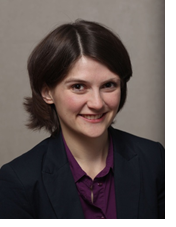 Aleksandra Chećko-Jelonek
Aleksandra Chećko-Jelonek
IS-Wireless
Aleksandra Chećko-Jelonek (female) is passionate about mobile networks, their architecture and optimization. She currently works as Software Defined RAN Product Manager at IS-Wireless. Aleksandra completed her PhD at the Technical University of Denmark (DTU) (2016) with MTI Radiocomp in the area of Cloud RAN and fronthaul. She did her MSc in telecommunications at DTU and Lodz University of Technology, Poland.
She has experience in R&D work (MTI Radiocomp, IS-Wireless), research (publications with over 1500 citations), standardization (IEEE, Open RAN), teaching (DTU, Ericpol/Ericsson), and expert consultancy (European Commission)
IP 8: Failures of TCP/IP: We need security, privacy, control and accountability! (by Smart Talk Beacon Solutions Ltd.)
Presenter:
Alfred Strauch, Smart Talk Beacon Solutions Ltd.
Steven Carbno, Smart Talk Beacon Solutions Ltd.
Irfan Al-Anbagi, University of Regina
Abstract:
TCP/IP is not secure, a fundamental change is required. One owner environments (VPN and firewalls) do not support shared operations and devices. This presentation will examine the fundamental weaknesses of TCP/IP and why can we not fix the existing infrastructure. Also, what will be the protocol requirements for TCP/IP replacement taking into account security and efficiency considerations and how digital rights can be defined, managed and protected.
Biography:
Alfred Strauch
Smart Talk Beacon Solutions Ltd.
Alfred Strauch, President Smart Talk Beacon Solutions Ltd. Alfred graduated from the University of Regina with a Bachelor of Art and Sciences. He has been involved in the computer industry for more than 25 years (including 15 years in the surveillance industry.
Steven Carbno
Smart Talk Beacon Solutions Ltd.
Steven Carbno, Technology Architect and Senior Programmer, Smart Talk Beacon Solutions Ltd. BSc from University of Regina, 20 years of programming experience. Architect and developer of “No Trust Security” architecture and protocol to secure, monitor, operate, manage and support IoT devices.
Irfan Al-Anbagi
University of Regina
Dr. Irfan Al-Anbagi is an Associate Professor in the Faculty of Engineering and Applied Science at the University of Regina. He received his PhD degree in Electrical and Computer Engineering from the University of Ottawa in October 2013. From 2013 to 2015, he worked as a Postdoctoral Fellow and a Product Development Manager of the “SecCharge” Project at the University of Ottawa. His research activities focus on security and reliability in networked systems, including quality of service (QoS), reliability, optimization and cybersecurity—specifically, modeling of failure propagation in networked cyber-physical systems; security and QoS in cloud-edge architectures; implementation of ambient intelligence in internet of things (IoT) systems; and wireless sensor networks and their implementation in critical applications. Dr. Al-Anbagi’s work aims to address research, economic, and industrial needs by developing critical components of cyber-physical systems in the areas of reliability, cybersecurity and privacy, and cloud integration. His team develops mathematical and simulation models to solve reliability and security issues. Over the past few years, Dr. Al-Anbagi has established strong research collaborations with companies across Canada in several industries. He has collaborated with ISM Canada (Saskatchewan), the mining industry in Saskatchewan, Ericsson Mobility (Quebec), Adria Manufacturing (Quebec), the Fuel Cell Division of Mercedes-Benz Canada (British Columbia), and other industries in Saskatchewan.
Dr. Al-Anbagi has published more than 50 articles in peer-reviewed journals and conference proceedings. His journal article titled “A Survey on Cross-layer Quality of Service Approaches in WSNs for Delay and Reliability Aware Applications,” published in IEEE Communications Surveys & Tutorials, won the 2017 Best Paper Award from the IEEE Communications Society’s Technical Committee on Communications Systems Integration and Modeling. Dr. Al-Anbagi is registered as a professional engineer with the Association of Professional Engineers and Geoscientists of Saskatchewan (APEGS) and Professional Engineers Ontario (PEO). He is a senior IEEE member and the chair of the IEEE South Saskatchewan section.
IP 9: Model, Simulate and Test 5G Systems with MATLAB (by MathWorks)
Presenter:
Alberto Alvarez, Mathworks
Abstract:
During this talk we will show the application of the 5G Toolbox for 3GPP 5G New Radio (NR) physical layer modeling. Standards-compliant models in MATLAB are implemented to explore the behavior of 5G physical layer systems or components. All the content is valid for MATLAB version R2021a.
- Uplink and downlink 5G NR waveform generation including pre-defined (test models, FRCs) and full custom waveforms.
- Modeling of 5G uplink and downlink physical channels and signals such as PDSCH/PUSCH, PDCCH/PUCCH, synchronization burst, DMRS, CSI-RS, SRS, and PT-RS.
- Channel models including those specified in TR 38.910: tapped delay line (TDL) and clustered delay line (CDL.
- Link-level simulation to measure the throughput of a downlink (PDSCH) or an uplink (PUSCH) 5G link over 2-D or 3-D channel model.
- Synchronization procedures including cell search, MIB, and SIB1 decoding.
- Beamforming, beam management, and precoding matrix indicator (PMI) determination.
- Measurements: ACLR, EVM, CQI.
- Other topics included, such as System-level, RF, Deep Learning, and prototyping.
Biography:
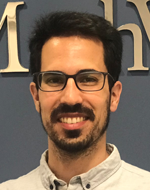 Alberto Alvarez
Alberto Alvarez
Mathworks
Alberto Alvarez works as an Academic Customer Success Engineer at MathWorks, based in Madrid. He engages with educators, researchers, students, and their institutions for making them achieve success with MathWorks products and tools. He received the MSc in Telecommunication Engineering from University of Las Palmas de Gran Canaria (ULPGC) in 2015, and the PhD degree in Multimedia and Communications from University Carlos III de Madrid (UC3M) in 2021. Also, he is a Member of IEEE. He has a wide expertise in wireless communications, with a focus on multi-antenna communications, Cell-Free Massive MIMO networks, interference management, and 5G systems.
IP 10: The path towards 6G: From millimeter waves to THz (by Rohde & Schwarz)
Presenter:
Taro Eichler, Rohde & Schwarz
Abstract:
Research activities in academia and industry worldwide towards the 6th generation (6G) mobile communication system have recently considerably gained momentum. In this overview we will highlight the anticipated 6G timeline and technology concepts which have to fulfil even more stringent requirements in comparison to 5G, such as ultra-high data rates, energy efficiency, global coverage and connectivity as well as extremely high reliability and low latency. One of the 6G technologies are sub-Terahertz and terahertz (THz) waves which have frequencies extending from 0.1 THz up to 10 THz and fall in the spectral region between microwave and optical waves. The prospect of offering large contiguous frequency bands to meet the demand for highest data transfer rates up to the terabit/sec range make it a key research area of 6G mobile communication.
These efforts require an interdisciplinary approach, with close interaction of high-frequency semiconductor technology for RF electronics but also including alternative approaches using photonic technologies. The THz region also shows great promise for many applications areas ranging from imaging to spectroscopy and sensing.
To fully exploit the potential of this frequency range it is also crucial to understand the propagation characteristics for the development of the future communication standards by performing channel measurements. We will highlight the characteristics of channel propagation in this frequency region and present new results from channel measurements at 158 GHz and 300 GHz.
Biography:
 Taro Eichler
Taro Eichler
Rohde & Schwarz
Taro Eichler is Technology Manager for wireless communications and photonics at Rohde & Schwarz in Munich with a focus on 5G and beyond technologies. Prior to joining Rohde & Schwarz, Taro worked for Intel Corporation as specialist for photonics communication solutions and for NTT Basic Research Laboratories. He also worked on research projects at The University of Tokyo in the field of quantum optics. He holds a diploma in physics from the Technical University of Munich with thesis at the Max-Planck-Institute for Quantum Optics and a PhD in physics from the University of Bonn, Germany.
IP 11: Accelerate O-RAN Adoption in Next-Gen Mobile Networks (by Keysight)
Presenter:
Jose Montero, Keysight
Abstract:
The promise of Open Radio Access Network (O-RAN) is huge, evolving the RAN industry towards more intelligent, open, virtualized and fully interoperable mobile networks. To succeed in deploying the O-RAN architecture, Network Providers need reliable tests that can quickly provide assurance that your network infrastructure will perform as expected in the real world. Simulation is key to realizing the full potential of network virtualization. In this talk you will learn more about how Keysight’s software-driven O-RAN test solutions cover all phases of the O-RAN lifecycle—from development, system integration, and interoperability to operations—allowing you to simulate any interface at any level.
Biography:
 Jose Montero
Jose Montero
Keysight
Jose Montero is Solution Expert at Keysight Technologies. Working in Keysight Industry Vertical for Mobile Operators and Service Providers, Jose is responsible for O-RAN testing solutions definition. He has been an expert in engineering and product management in 3G/4G/5G Radio, Transport layer and Core. He has worked with network vendors such as Huawei, Ericsson and Nortel Networks.
IP 12: 5G Mobile Private Networks (by Vodafone)
Presenter:
Kyriakos Exadaktylos, Vodafone
Abstract: 5G and Mobile Private Networks are enabling the digital transformation of manufacturing and the factories of the future. It is essential that network operators build the 5G right so we deliver all key enablers for Private networks in Industry 4.0. This talk reviews the key characteristics of Mobile Private Networks and present real use cases of how companies are now adopting 5G technology to reduce manual processes and enable highly efficient, connected, and flexible factories of the future.
Biography:
 Kyriakos Exadaktylos
Kyriakos Exadaktylos
Vodafone
Kyriakos Exadaktylos is the Head of Network Architecture Specifications of Vodafone Group. Kyriakos is based in Madrid, and over the last 20 years he has held in various international positions in Vodafone UK and Vodafone Group. In his current role, he is responsible for setting group architecture standards and drive standardisation across countries on new technologies such as Private Networks for Industry 4.0.
IP 13: Open RAN and the digital transformation (by Vodafone)
Presenter:
Francisco Martín Pignatelli, Vodafone
Abstract: This session will discuss how Open architecture technologies, such as OpenRAN, will be a key enabler of this digital transformation of European economies and societies allowing network operators to source RAN equipment from a more diverse range of general purpose processor hardware, software and radio antennae vendors, each specialising and competing in different parts of the RAN supply chain.
OpenRAN also enables networks to be operated in entirely new ways, for example, network automation will drive operational innovation and efficiencies. The fact that the software and hardware layers are disaggregated, brings additional flexibility to network operations, allowing new features and capabilities to be introduced simply via software upgrades, enabling the delivery of flexible high quality services tailored to customers’ specific needs.
Biography:
 Francisco Martín Pignatelli
Francisco Martín Pignatelli
Vodafone
Francisco (Paco) Martín Pignatelli is a Vodafone Executive with more than 22 years of Experience in Mobile. He has worked Internationally in US and UK and has great breadth of experience in all Network domains as well as some customer facing positions. He is more recently focused in OPEN RAN, an activity he pioneered in 2016 that has grown to become the most relevant trend in mobile today, with Vodafone as one of the leading promoters.
IP14: Spain’s 5G deployment, lessons learned
Presenter:
Federico Ruiz, Spanish 5G National Observatory
Abstract:
Spain’s 5G players - government, operators, industry — are investing heavily in pilot projects covering virtually every use case. This session will give an overview and highlights of Spain’s first years of 5G consumer deployment and business use cases.
We will provide an inside look at pilot case experimentation, exposing lessons learned and comparing deployment in Spain and in other countries in an effort to identify the key ingredients for 5G’s economical and societal success.
Biography:
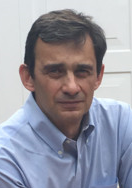 Federico Ruiz
Federico Ruiz
Spanish 5G National Observatory
Federico Ruiz holds an Engineering master’s degree from Madrid’s Polytechnic University (UPM). He is currently leading the Spanish National 5G Observatory initiative.
Most of his career has taken place in start-ups, as start-up entrepreneur/founder, notably in Semiconductors, but also in avionics and fintech. He has filled management and engineering positions in business/product development, technical marketing and R&D.
He co-founded a semiconductor start-up that grew to 20-million Euro annual revenue and in which he worked as CTO and Vice-President in charge of new business development, Intellectual Property sales/licensing, participation in standards bodies and IP licensing.
His current interests are on Innovation in the areas of 5G, regulation, AI and Blockchain.
IP 15: Troubleshooting the gNB and UE with WaveJudge Wireless Analyzer (by Keysight)
Presenter:
Kevin Dobis
Abstract:
In this session, Keysight will show how to troubleshoot R&D and IOT issues using advanced PHY and Layer 1-3 protocol analysis. Avoid finger pointing and analyze the effects of PHY-layer issues on the upper layers. Will also discuss the key challenges and solutions for gNB conformance and interoperability testing, and integration with full stack. This presentation will also include demonstrations based on captures and recordings from real gNB & UE equipment.
Biography:
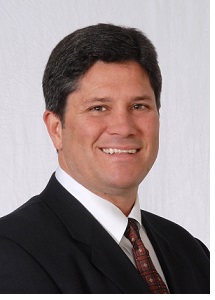 Kevin Dobis
Kevin Dobis
Keysight
Kevin Dobis did his undergraduate study at The Pennsylvania State University, receiving a BSEE degree. He joined Sanjole (now Keysight) in July of 2009, and is responsible for all WaveJudge Wireless Analyzer activity in the Americas and EMEA regions. Prior to joining Sanjole, Kevin worked over 22 years in various Sales & Executive Management roles: Spirent Communications (including Vice President of Sales), TTC (now Viavi), Hekimian Labs, and Laser Precision (now Anritsu).
IP 16: PRIME Hybrid: offering the best of both worlds (by Javier Hernández Fernández)
Presenter:
Javier Hernández Fernández
Biography:
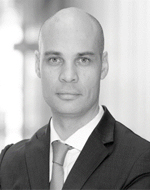 Javier Hernández Fernández
Javier Hernández Fernández
Iberdrola Innovation Middle East
Javier Hernández Fernández currently serves as Technical Director for Iberdrola Innovation Middle East, in which he holds accountability for steering the delivery of research, technical consulting projects and innovation initiatives, focussing primarily on the smart grid, renewables and energy efficiency domains. In addition to a B.Sc. in Computer Science from the University of Ottawa (Canada), Javier holds two Masters degrees, in Energy Management from the University of Zaragoza (Spain), and Project Management from the University San Pablo (Spain).



